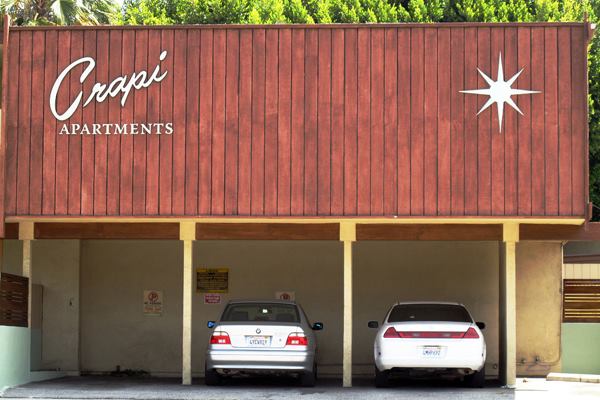Reyner Banham might be history. He once sold Los Angeles as a landscape producing fantastic and fantastical hybrid phenomena, from dingbats and Case Study marvels of modernism to the “Plains of Id,” “Surfurbia” and “Autopia.” His L.A. was a place that did not make sense according to standard urban recipes, but Banham gave us tools to understand that Magical Kingdom of sprawl. Subsequent critics, such as Ed Soja and Mike Davis, showed how, in Soja’s words, L.A. is the “Alpha and the Omega,” summing up everything the human-made environment is becoming. Yet, as I riffed off Joe Day’s thoughtful explication of Banham’s book at a joint appearance at USC last week, it dawned on me: the place is not so different anymore.
L.A. is becoming a normal city. I found myself stunned to see Metro’s Expo Line creeping towards the ocean from downtown, already fully operational through Culver City and under construction all the way to Santa Monica. Near where the final stop will be, I wandered through blocks of both high-end and subsidized housing a block away from the beach, packed together to create a human-scaled neighborhood where the Rand Corporation’s low-rise office spaces had once sprawled. Across the street from SCI-Arc, where I was viewing student projects, a 3,000-foot long housing block, designed by Michael Maltzan, has just opened, and around it, all along what was once the beginning of the eastward sprawl of industrial spaces that made the westward sprawl of housing possible, there are now coffee bars and boutiques serving myriads of loft dwellers.
Once the Exposition Line is fully open, L.A.’s Metro system will begin to make sense for long distances, though already fancy new buses course throughout the Southland on express routes. Not all signs of densification and the filling in of sprawl are good: the commute from the office buildings spread throughout the Westside and the Valley is now equal to or worse than the traffic in the other direction, and all that mass transit will not solve that problem. Prices have risen so far as to push the poor ever further out to the edges of the 100-mile conurbation that makes up the Southland. These are real big city problems in an era in which Edge Cities have become the new norm.
The one thing that will always make Southern California different is its landscape. L.A. is still where America’s drive to the west ends, terminating at the Pacific Ocean, where the mountains lord over the beaches with only a spread of palm trees, orange blossoms and eucalyptus interspersed among homes and offices in-between, and where the soft climate dulls all contrasts.
Climate change might change all that, and the current severe drought may be a harbinger of a much less pleasant L.A., but for now nature still overwhelms and grows over everything, as an evening walk through a residential neighborhood showed me: no matter how ugly the McMansions, their faults dissolved under green and blossom.
A new plan would solidify nature’s role in Los Angeles by threading “greenways” throughout the Southland. It is in many ways a version of an early-1990s proposal of that name by Scott Johnson, FAIA, and Bill Fain, Jr., FAIA. The idea is to use right-of-ways, storm drainage basins, and all the other linear leftovers that weave through the L.A. basin to create a continual carpet of usable open spaces. These would connect both to the already existing system of parks covering most of the Angeles Crest, San Bernardino, and Santa Monica Mountains, and to the beaches that are, by California law, open to the public.
If such a vision comes to pass—and the re-greening of the L.A. River is already well underway—L.A. will have come up with a system of spread-out amenities, from places to work and live, to both private and public transportation, to shared open space, that actually make sense out of sprawl. The Plains of Id, Autopia, and Surfurbia might merge, and we would have a whole new urban ecology. Maybe it will be time to rewrite Reyner Banham and learn from L.A. again after all.
Aaron Betsky is a regularly featured columnist whose stories appear on this website each week. His views and conclusions are not necessarily those of ARCHITECT magazine nor of the American Institute of Architects.
